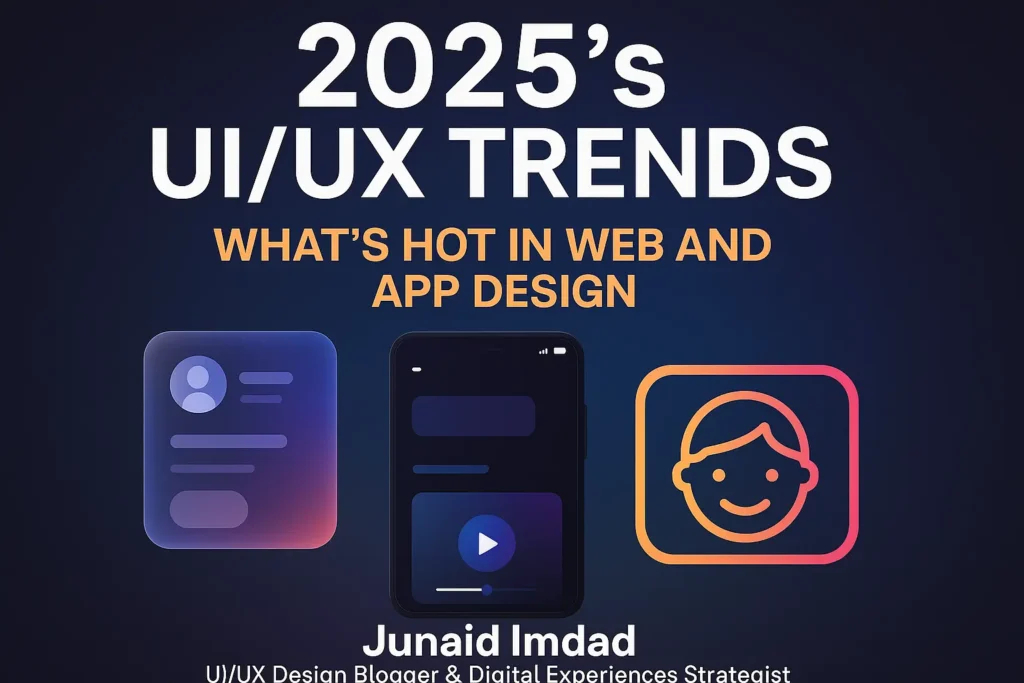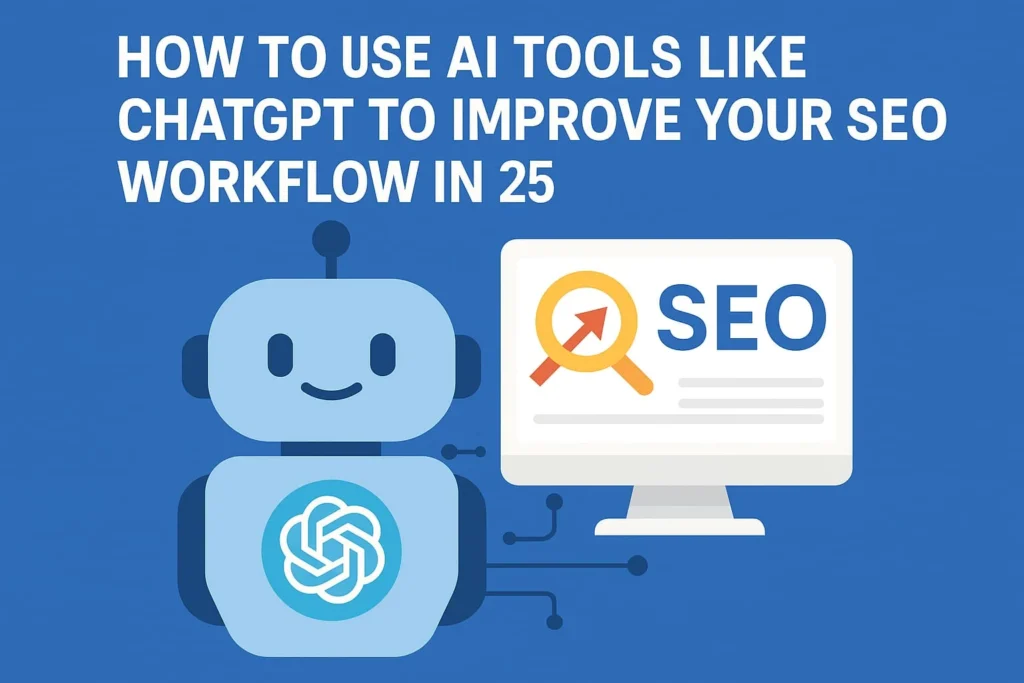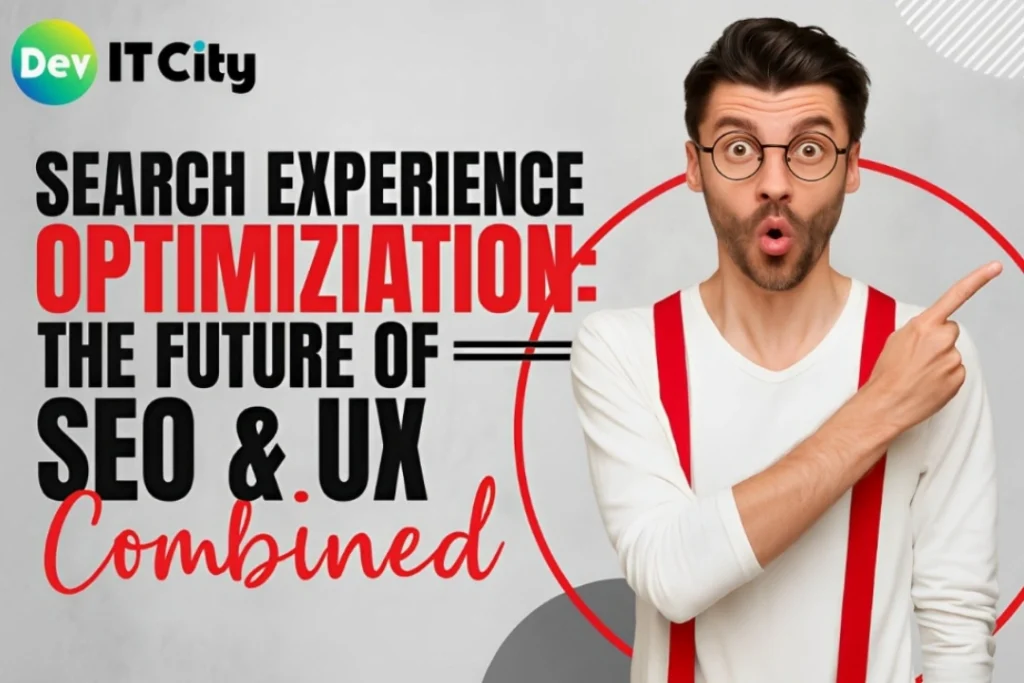seo

August 06,2025 • 14 min read
SEO Trends in 2025: A Complete Guide to Stay on Top

SEO Trends in 2025: A Complete Guide to Stay on Top
By Junaid Imdad, Blogger & Digital Experience Strategist
In the last five years, SEO has experienced a dramatic transformation. It’s no longer enough to just stuff keywords, build backlinks, or make a few technical adjustments. With AI chatbots now having live web access, Google’s AI Overviews, and entirely new ways to be discovered, enhancing brand visibility is all about optimizing for AI engines, not just focusing on Google.
Central to that shift:
- Generative Engine Optimization (GEO): optimizing your content so AI assistants (like ChatGPT, Google SGE, Perplexity) cite you or use your information when generating answers.
- Answer Engine Optimization (AEO): structuring direct, concise, correct answers so your content is included in the output of AI systems.
- The growing prevalence of AI Overviews embedded right at the top of search results pages (SERPs), reducing click‑through rates dramatically.
In 2025, SEO is transforming into a more complex practice. It's not just about climbing the traditional Google rankings anymore; you also need to optimize for AI engines that deliver “zero-click” answers and navigate the new landscape of agentic AI interactions, where bots are increasingly browsing the web on behalf of users.
In the next 3,000+ words, we’ll dive into the major trends that are shaping SEO in 2025 and share some practical steps you can take to stay ahead of the game.
SEO Trends in 2025: What You Need to Know to Stay Ahead
As the digital world keeps changing, SEO trends for 2025 are transforming how businesses tackle search engine optimization. This year, Google is putting even more focus on user experience, valuable content, and E-E-A-T (Experience, Expertise, Authoritativeness, and Trustworthiness). There's a heightened scrutiny on AI-generated content, which is encouraging brands to emphasize originality and genuine human insight. Voice search optimization, semantic keyword strategies, and zero-click searches are on the rise, requiring smarter, more intent-driven content. To stay ahead of the game, it's essential to adapt to these trends and leverage AI tools, structured data, and real-time analytics to create content that not only ranks well but truly connects with the audience.
1. AI Overviews and Zero‑Click Searches: The New Battlefield
What Are AI Overviews?
Google’s AI Overviews (née SGE: Search Generative Experience) place a concise, AI‑written summary above traditional search results. These summaries often provide enough information that users do not click through to websites.
Why It Matters
- Early studies indicate 15–47% of queries now produce an AI Overview, depending on topic area.
- Behind the scenes, organic visits are down 15–25% in niches where Overviews dominate.
- Studies show that even when your site ranks in the traditional top 10, AI Overviews often cite sources that don’t overlap with your top ten links—but still shape perception and brand authority.
How to Adapt
- Create concise, factual snippets that answer specific questions clearly—these are easier to pull into Overviews.
- Use structured markup, bullet lists, FAQ schema, and headings that map directly to likely prompt formats.
- Build topical authority (see GEO below) so the AI “trusts” your content as a referenceable source.
- Increase E‑E‑A‑T signals: expertise, experience, authoritativeness, and trustworthiness validated in context of AI output.
2. Answer Engine Optimization (AEO): When Bots Answer, You Win
AEO Explained
Where GEO focuses on generative citations, AEO is about sculpting your content so that answer engines like ChatGPT, Perplexity, or Google Overviews choose your content—they preach direct responses, Q&A formats, and high clarity.
Why Now?
- AI tools began integrating real-time web retrieval in late 2024 and early 2025. Now chatbots can pull current info, cite sources, and even include clickable links.
- AEO tools are booming: hundreds of new startups, agency offerings, and analytics platforms are emerging to track how often content is picked up by AI bots.
AEO Best Practices
- Use schema markup consistently—FAQ, Q&A, authorship, etc.
- Format content as question + direct answer, followed by a brief elaboration.
- Cover related sub‑questions on the same topic page (e.g. “What is X?”, “How does X compare to Y?”, “Is X safe for Z?”), since AEs prefer nuanced clusters.
- Ensure your content is fact‑checked, updated, and concise for swift inclusion.
3. GEO: Generative Engine Optimization — Getting “Hoovered Up”
Defining GEO
GEO means optimizing content so it’s citable by LLMs—rather than only ranking in search results, you're aiming to be part of answer generation. It's built on deep topical authority, structured content cues, and metadata optimized for AI ingestion.
How GEO Works in Practice
- Analysts rely on special files like llms.txt (similar to robots.txt but for AI models), AI‐specific metadata, and clear, structured data targeting generative models.
- Content should be written in a way that’s easily machine‐parsable: bullet lists, tables, definitions, comparisons, and clear citations help.
- GEO tools track what brand mentions or citations chatbots give you over time—helping refine your strategy.
GEO Strategy Tips
- Focus on rich, authoritative content in your niche that demonstrates domain expertise.
- Use conversational yet fact‑dense language, matching the phrasing typical of LLM prompts.
- Employ structured metadata and schema to aid AI systems in identifying and attributing your content.
- Analyze bot output patterns to understand what types of phrasing or format trigger reference.
Want to get more detail about GEO, click on it to read ours blog.

4. Hybrid SEO: Merging Traditional Practices with AIO, AEO & GEO
Why You Still Need Traditional SEO
Even in 2025, Google’s main ranking algorithms still matter for organic traffic: technical SEO, backlinks, page speed, keyword research, internal linking, etc., remain foundational.
Reddit-based practitioner feedback confirms this:
“Keyword research, technical fixes—foundational. Nothing wrong with those”.
A True Hybrid Approach
- Combine classic keyword targeting with AEO/GEO‑friendly structure.
- Build topical clusters: cornerstone pages supported by FAQ and long‑form posts.
- Use AI tools to assist with content draft, metadata optimization, readability, alt text suggestions—and then human‑edit for voice and accuracy.
Structured Framework
- Keyword + user intent research: still the base.
- Outline content to hit traditional SEO (H1s, subheaders, LSI terms).
- Layer in FAQ blocks, structured Q&A, bullet summaries for AEO.
- Use GEO principles: citations, fact boxes, schema markup, llms.txt.
- Human‑review and polish for tone, voice, brand, compliance.
5. Search Intent and Experience Signals
Intent Is Everything
In 2025, search engines understand what users are looking for, not just which keywords they use. That means your content must match the deeper intent, whether that’s informational, transactional, navigational, or conversational.
Experience-based Optimization
Google and AI systems now value firsthand experience (reviews, case studies, user‑generated content) highly.
- Real voices and human stories help content stand out from AI‑spam pages.
- UGC (user‑generated content) like reviews, comments, photos boost authenticity and trust signals.
UX and Mobile‑First Still Matter
Site structure, page design, readability, mobile friendliness, load speed—these are still ranking factors and also influence clicks and conversion quality after discovery.

6. Community and UGC: Co‑authoring your SEO
Forums, Q&A Sites, Community Searches
Search engines increasingly surface content from Reddit, Quora, and niche forums directly in results—even AI Overviews may quote forum answers.
- Community discussions often answer real nuanced questions that content marketers haven’t addressed yet.
- Engaging where your audience is (writing expert answers or summarizing threads) can boost visibility.
Harnessing UGC
- Incorporate reviews, testimonials, Q&A on product or service pages.
- Encourage users to ask & answer questions—especially if they provide original value.
- Use structured data markup to identify UGC and show reviewers, ratings, Q&A in SERPs.
7. AI‑Assisted Content Creation—but Keep the Human in the Loop
The Role of AI Tools in 2025
AI can’t replace you, but it can dramatically speed up ideation, drafts, metadata, alt text, and readability enhancements.
- Identify content gaps by analyzing top‑performing pages.
- Generate first‑draft outlines and content blocks (with human refinements).
- Dynamically tweak meta titles, descriptions, alt text, readability level.
Preventing Spam & Over‑automation
Google and Bing are cracking down on low‑value AI‑only content. You need responsible augmentation: human oversight on tone, accuracy, E‑E‑A‑T, and relevance.
- Always review AI‑drafted text.
- Add real humans’ names, quotes, photos where applicable.
- Cite real sources; avoid generic, vague phrasing.

8. Agentic AI Optimization (AAIO): Getting Ready for AI Agents
What Is AAIO?
As agentic AI (robots that act autonomously online) become common, Agentic AI Optimization (AAIO) is emerging: optimizing your content to interact well with automated agents, not just humans or AI summarizers.
- Agents may perform tasks like booking, comparing, extracting info.
- Content needs machine‑actionable structure, APIs, clear endpoints.
Preparing for the Future
- Provide APIs, structured data, clear intent signals so if a bot needs to book an appointment or extract your info, it can do so autonomously.
- Adopt AAIO principles by modeling agent‑friendly metadata and navigation—such as step‑by‑step instructions or schema for events/actions.
9. Metrics & KPIs for a Post‑Click‑Through World
Metrics to Rethink
With zero‑click results and AI summaries being dominant:
- Don’t focus only on organic traffic—focus on mentions, citations in AI outputs.
- Track brand presence in AI-generated responses, including citation frequency, sentiment, and placement.
- Track conversion rate from AI referrals (chatbots clicking through) rather than total visits.
Monitoring Tools
- Platforms like Profound, Asva AI, Siftly help track GEO and brand visibility in AI bots.
- Use Google Search Console and traditional analytics for conventional SEO KPIs and technical performance.
- For UGC and community influence, monitor forum activity trends, sentiment, and referral traffic from community platforms.
10. Action Plan: How to Optimize in 2025
Here’s a structured plan you can implement:
Phase 1: Audit & Research
- Technical SEO audit: core vitals, mobile optimization, internal linking, load speed.
- Keyword + intent audit: find questions and conversational prompts your audience is asking.
- Competitive audit: examine which sites are cited in AI Overviews for key topics.
Phase 2: Content Structure & Gap Strategy
- Develop pillar pages targeting main topics (e.g. “What is AEO?”, “How to optimize for AI bots”).
- Build complementary FAQ sections, sub‑topics, comparison tables, lists.
- Use schema markup: FAQ schema, Q&A schema, article schema, local business, etc., as appropriate.
Phase 3: AI‑Friendly Format
- For each major topic: intro answer box (short, direct), followed by elaboration.
- Include bullet points, fact boxes, tables to increase parse‑ability.
- Add llms.txt or metadata hints where possible to signal important sections.
Phase 4: Content Creation & Elevation
- Use AI tools for drafting outlines, metadata, alt text. Then edit heavily.
- Create author bios, real examples, user quotes and experience snippets.
- Incorporate user‑generated content where available: reviews, questions, comments.
Phase 5: Promotion & Brand Tracking
- Push content to trusted platforms: guest posts, industry associations, high authority blogs.
- Submit content to forums, Quora, Reddit where relevant.
- Employ GEO tracking tools to measure brand mentions in AI outputs.
Phase 6: Measure and Iterate
- Monitor traditional SEO KPIs (rankings, traffic, CTR).
- Track AI mentions and inclusion in Overviews or chatbots.
- Measure conversion and engagement quality, not just visits.
- Refine content clusters, metadata, and formats based on what AI engines prefer.
11. Emerging & Overlooked Trends to Watch
Voice‑First & Conversational UX
As voice assistants link to AI engines, structuring content for spoken query patterns is vital. Use conversational language and short, clear answers.
Local SEO & AI Agents
Local businesses must adapt: AI agents that help users book appointments or get local data rely on LocalBusiness schema, opening hours, accurate address info, reviews, and verified profiles.
Ethical AI & Explainability
AI systems now value trustworthy, explainable content. Providing transparency around sources, authorship, and data provenance supports better inclusion by AI systems and builds user confidence.
12. Sample Use Case: AEO + GEO in Action
Let’s say you run a health‑tech blog and you want to rank in AI Overviews for “how to assess heart rate variability.”
Step 1: Primary page
- Title: “Heart Rate Variability: What It Is, Why It Matters, and How To Check It”
- Short direct answer (50 words) in FAQ‑style box: “Heart rate variability (HRV) measures the variation between heartbeats… here's how you test it…”
Step 2: Supporting content
- Sections: “What affects HRV?”, “How to improve HRV?”, “Best devices/tools to track HRV”.
- Include bullet lists, tables (example: baseline HRV by age, device comparison table).
- Add FAQ schema covering related questions: “Is high HRV always good?”, “Can HRV predict stress?”
Step 3: GEO cues
- In metadata: use structured hint like “Important section: HRV tools comparison”.
- Add llms.txt to highlight the table as key.
Step 4: Human voice
- Include a doctor quote or case study.
- Show real‑user reviews (“I tracked my HRV for 30 days, saw these results…”).
Step 5: Outreach
- Publish guest posts with links from medical forums.
- Answer Reddit and Quora threads linking back to your FAQ snippets.
Results
- AI Overviews are more likely to include your short direct answer box as the summary.
- Chatbots citing your page as a trusted source because of clean structure and authority.
- Increase in both referral traffic from Perplexity or ChatGPT clicks and conversions postpartum.
13. The Road Ahead: Where SEO Will Go Next
- AI search will further reduce click‑through, so brands must own mentions, not just clicks.
- GEO and AEO tools and platforms will become standard parts of the marketing stack.
- The rise of agentic bots will make AAIO more important: structure, APIs, machine‑readable prompts.
- Algorithms will continue punishing spammy AI‑only content—so human quality will win.
- SEO must become user‑centric, experience‑driven, and AI‑aware all at once.
Quick Trends Summary Table
| Trend | What It Means | Your Key Action |
|---|---|---|
| AI Overviews / Zero‑click | Summaries reduce traditional traffic | Format direct answer, bullet, table |
| AEO | Conversational prompts shape content | Build FAQ + Q&A structure, schema |
| GEO | AI models cite your content | Topical depth, li metadata, structured data |
| Hybrid SEO | SEO isn’t dead—just evolved | Use both technical SEO & AI‑friendly formatting |
| Intent & Experience | Matching user need matters most | Use real examples, reviews, UX optimization |
| UGC & community | Authentic voices + forum visibility matter | Engage communities, integrate UGC |
| AI‑Assisted creation | Speed + AI, but with human polish | Human‑in‑loop for accuracy and voice |
| AAIO (Agents) | Bots accessing your info directly | APIs, agent‑friendly markup & navigation |
| New Metrics | Citations matter more than clicks | Track AI mentions, conversion, watch decline traffic |
Final Thoughts
In 2025, SEO has evolved beyond just trying to outsmart algorithms with keyword stuffing or outdated backlink tactics. Now, it’s all about creating content that’s genuinely helpful, transparent, and optimized for both people and machines. With artificial intelligence becoming a key player in how users find information, your online visibility isn’t just tied to traditional search engines like Google or Bing anymore. Nowadays, AI-powered tools such as summarizers, voice assistants, chatbots, and smart agents are curating and delivering content straight to users, often skipping the usual search results entirely.
To keep up in this competitive landscape, businesses and content creators need to make sure their websites are not only fast and easy to crawl but also rich in context and structured for machine readability. Elements like schema markup, structured data, and clear, accurate writing are now essential. Your content should showcase Experience, Expertise, Authoritativeness, and Trustworthiness (E-E-A-T), as AI models increasingly depend on these indicators to decide what gets highlighted or referenced.

If your content resonates with both AI systems and human readers, you’re not just keeping up with the changes—you’re actually gaining a significant advantage in this intricate, AI-driven landscape. The future of SEO is all about blending: it requires a mix of technical skill, human touch, and clarity that machines can easily understand.
In short, focus on clear structure, straightforward answers, insightful human perspectives, and metadata that’s friendly for AI. Create topic clusters and narratives that appeal to bots. And remember, it’s essential to have a human touch steering the outputs generated by AI.
If you need assistance customizing this for your particular industry or want downloadable templates for FAQs, llms.txt, or content clusters, just let me know—I’d be more than happy to help you refine your strategy!
By Junaid Imdad, Blogger & Digital Experience Strategist
Dev IT City LTD. Details
User Profile
- Full name
- Dev IT City LTD.
- Email address
- info@devitcity.com
- Join Date
- 2024-07-28
- State
- City
- Pincode
- Address
- Follow us on Facebook
- Follow us on Twitter
- Website Name
- https://devitcity.com/
- Bio
- Established in 2022, Dev IT City Ltd. offers a comprehensive suite of digital solutions for businesses. We specialize in software development for mobile and web, along with various marketing services, including SEO, social media marketing, and graphic design. With a proven track record of success in the UAE, Malaysia, UK, USA, Philippines, Pakistan, India, Europe and other countries, Dev IT City Ltd. is your trusted partner for achieving digital success. We bridge the gap between marketing strategy and software development. Our team of passionate marketers and skilled developers work together to craft impactful digital experiences that drive results. We don't just talk success, we build it. Join us on this journey as we shape tomorrow's digital experiences, one breakthrough at a time.